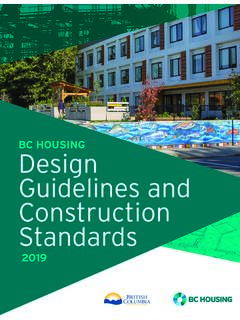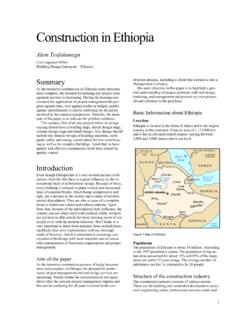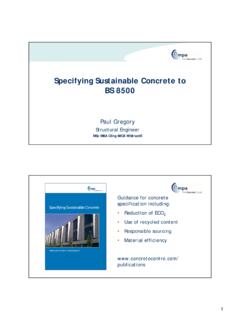Transcription of Crime Prevention Through Environmental Design
1 Crime Prevention Through Environmental Design Guidelines for Queensland State of Queensland (Queensland Police Service) 2021. The Queensland Government, acting Through the Queensland Police Service, supports and encourages the dissemination and exchange of publicly funded information and endorses the use of Creative Commons. All Queensland Police Service material in this document . except the QPS logo, any material protected by a trademark, and unless otherwise noted is licensed under a Creative Commons Attribution licence. The Queensland Police Service has undertaken reasonable enquiries to identify material owned by third parties and secure permission for its reproduction.
2 Permission may need to be obtained from third parties to re-use their material. A list of third party images is located at the end of this document. Written requests relating to the copyright in this document should be addressed to: Intellectual Property Coordinator QPS Legal Unit Legal Division Queensland Police Service GPO Box 1440 Brisbane 4001. Phone: 07 3364 3958. Email: The purpose of these Guidelines Disclaimer The CPTED Guidelines for Queensland (Guidelines). To the extent possible under applicable law, the material in seek to promote the incorporation of Crime Prevention this document is supplied as-is and as-available, and makes Through Environmental Design (CPTED) principles into the no representations or warranties of any kind whether express, planning, Design and management of the built environment implied, statutory, or otherwise.
3 This includes, without in Queensland. limitation, warranties of title, merchantability, fitness for a particular purpose, non-infringement, absence of latent or other They aim to: defects, accuracy, or the presence or absence of errors, whether guide and encourage public and private developers or not known or discoverable. Where disclaimers of warranties to Design with CPTED in mind are not allowed in full or in part, this disclaimer may not apply. guide and encourage local councils to incorporate To the extent possible under applicable law, neither the CPTED principles in the preparation, review Queensland Government or the Queensland Police Service and implementation of planning schemes and policies will be liable to you on any legal ground (including, without inform and encourage the community to participate limitation, negligence) or otherwise for any direct, special, in creating and maintaining safe environments.
4 Indirect, incidental, consequential, punitive, exemplary, or other losses, costs, expenses, or damages arising out The Guidelines outline the purpose of CPTED and the of the use of the material in this document. Where a limitation seven key principles and supporting practices to implement. of liability is not allowed in full or in part, this limitation They are offered to all in the community with an interest may not apply. in and responsibility for the environments we create. Who should be involved in CPTED? About these Guidelines The Guidelines are intended for: The Guidelines are in summary form and are current when planners and designers working for local councils first published.
5 While every care has been taken in the and state agencies preparation of these Guidelines, the Queensland Police Service cannot accept responsibility for any errors, including those police and others involved in Crime Prevention activity caused by negligence, in the material. The Queensland Police architects, urban designers, engineers, landscape architects, Service does not guarantee, and accepts no legal responsibility community development managers, social planners, building whatsoever arising from or in connection to the accuracy, managers and others involved in planning, designing and reliability, currency, correctness or completeness of the managing our built environment and especially publicly information contained in these Guidelines.
6 If you are seeking accessible places specific advice about your particular CPTED requirements, you should contact a suitability qualified provider. members of the community who support a safe and socially sustainable environment. The Guidelines may include third party content. The distribution of this material should in no way be construed as granting The CPTED principles outlined in these Guidelines are not rules any licence or right for you to use that third-party content or universal solutions for every situation. Instead, they focus for your own purposes. Before using any of this content, attention on key issues to consider relating to the needs you should make your own enquiries with the authors of each local setting.
7 Of this content. Crime Prevention Through Environmental Design Guidelines for Queensland i Contents Foreword 1 Chapter 7. CPTED considerations Overview 2 for residential neighbourhoods 38. Chapter 1 Chapter 8. What is CPTED? 4 Applying CPTED to vulnerable areas 44. Concepts behind CPTED ..5 1. Automatic Teller Machines (ATMs) ..45. 2. Service stations ..45. Chapter 2. 3. Night-time entertainment areas ..45. CPTED The past, present and future 7. 4. Public toilets ..45. The past ..7 5. Skate park facilities ..45. The present ..8 6. Car parks ..45. The future ..8 7. Transport infrastructure.
8 46. 8. Lighting Design and signage ..46. Chapter 3 9. Other domains ..46. CPTED principles and practices 10. 1. Activation .. 11. Conclusion 48. 2. Surveillance ..12. Definitions 50. 3. Ownership .. 13. 4. Stakeholder management .. 14. References and further resources 51. 5. Legibility .. 15. 6. Territoriality .. 16 Acknowledgements 52. 7. Vulnerability .. 17. Use of third-party images .. 52. Chapter 4. CPTED Changes, challenges and opportunities 20. Changes in the nature of our 20. Chapter 5. CPTED Evolving Design ideas 24. Chapter 6. Applying CPTED principles to urban settings 29.
9 1. The Design of buildings ..29. 2. The Design of precincts and neighbourhoods ..31. 3. The Design of public space ..32. 4. The Design of centres ..34. 5. The Design of pedestrian and cyclist systems ..35. 6. Redevelopment and renewal ..37. ii Crime Prevention Through Environmental Design Guidelines for Queensland Foreword The Queensland Government is committed to ensuring the safety of Queenslanders. This commitment is met Through the support of a suite of preventative actions and early interventions that address the causes of personal and property Crime . The Government recognises that Crime Prevention Through Environmental Design (CPTED) is a well-researched Crime Prevention method that has been shown to reduce the fear of, and incidence of, Crime .
10 CPTED enhances community safety by encouraging organisations, businesses and communities to incorporate Crime Prevention strategies into the planning, Design and management of public spaces in our local communities. The CPTED Guidelines for Queensland were originally developed in 2007 in consultation with relevant stakeholders across Queensland including local government, the planning and building industry, police and our communities. In meeting its commitment to reduce Crime , the Government continues to acknowledge the importance of forming and maintaining partnerships with stakeholders across our State.













